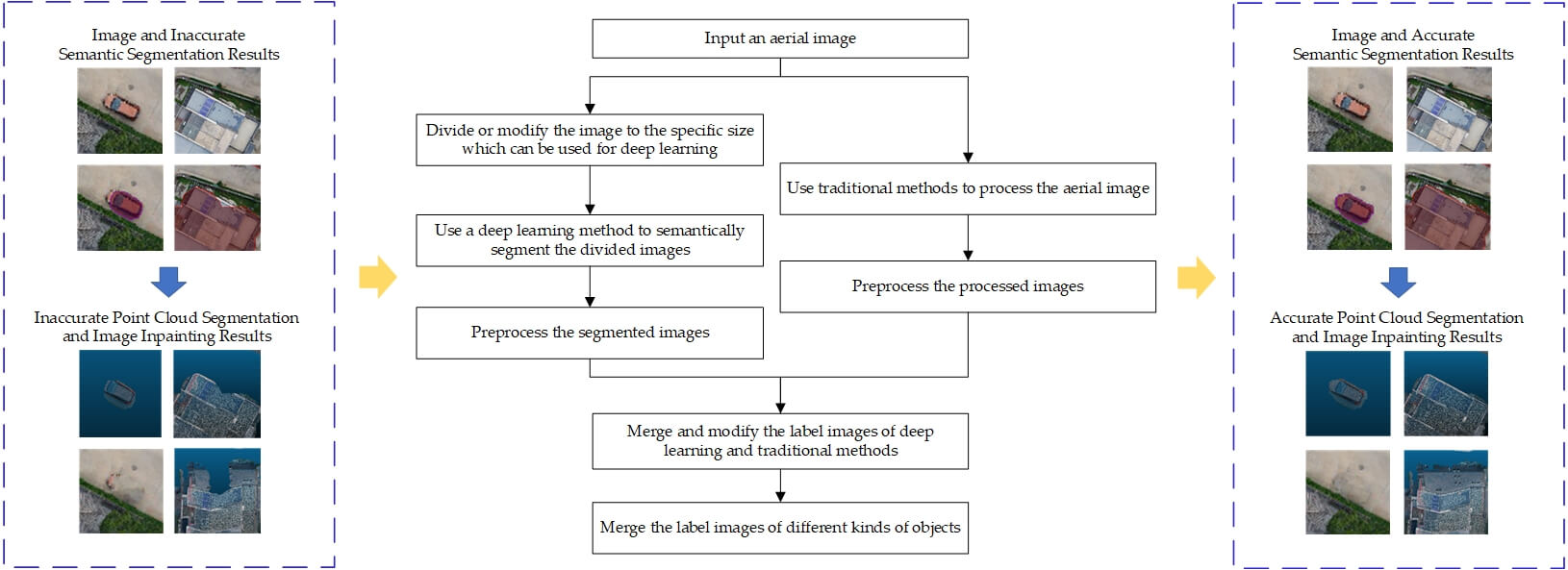 Open Access
Open Access
ARTICLE
Adaptive Boundary and Semantic Composite Segmentation Method for Individual Objects in Aerial Images
1 School of Automation Science and Electrical Engineering, Beihang University, Beijing, 100191, China
2 Shenyuan Honors College, Beihang University, Beijing, 100191, China
3 State Key Laboratory of Virtual Reality Technology and Systems, Beijing, 100191, China
* Corresponding Author: Ni Li. Email:
Computer Modeling in Engineering & Sciences 2023, 136(3), 2237-2265. https://doi.org/10.32604/cmes.2023.025193
Received 27 June 2022; Accepted 21 November 2022; Issue published 09 March 2023
Abstract
There are two types of methods for image segmentation. One is traditional image processing methods, which are sensitive to details and boundaries, yet fail to recognize semantic information. The other is deep learning methods, which can locate and identify different objects, but boundary identifications are not accurate enough. Both of them cannot generate entire segmentation information. In order to obtain accurate edge detection and semantic information, an Adaptive Boundary and Semantic Composite Segmentation method (ABSCS) is proposed. This method can precisely semantic segment individual objects in large-size aerial images with limited GPU performances. It includes adaptively dividing and modifying the aerial images with the proposed principles and methods, using the deep learning method to semantic segment and preprocess the small divided pieces, using three traditional methods to segment and preprocess original-size aerial images, adaptively selecting traditional results to modify the boundaries of individual objects in deep learning results, and combining the results of different objects. Individual object semantic segmentation experiments are conducted by using the AeroScapes dataset, and their results are analyzed qualitatively and quantitatively. The experimental results demonstrate that the proposed method can achieve more promising object boundaries than the original deep learning method. This work also demonstrates the advantages of the proposed method in applications of point cloud semantic segmentation and image inpainting.Graphic Abstract

Keywords
Cite This Article
 Copyright © 2023 The Author(s). Published by Tech Science Press.
Copyright © 2023 The Author(s). Published by Tech Science Press.This work is licensed under a Creative Commons Attribution 4.0 International License , which permits unrestricted use, distribution, and reproduction in any medium, provided the original work is properly cited.


 Submit a Paper
Submit a Paper Propose a Special lssue
Propose a Special lssue View Full Text
View Full Text Download PDF
Download PDF Downloads
Downloads
 Citation Tools
Citation Tools